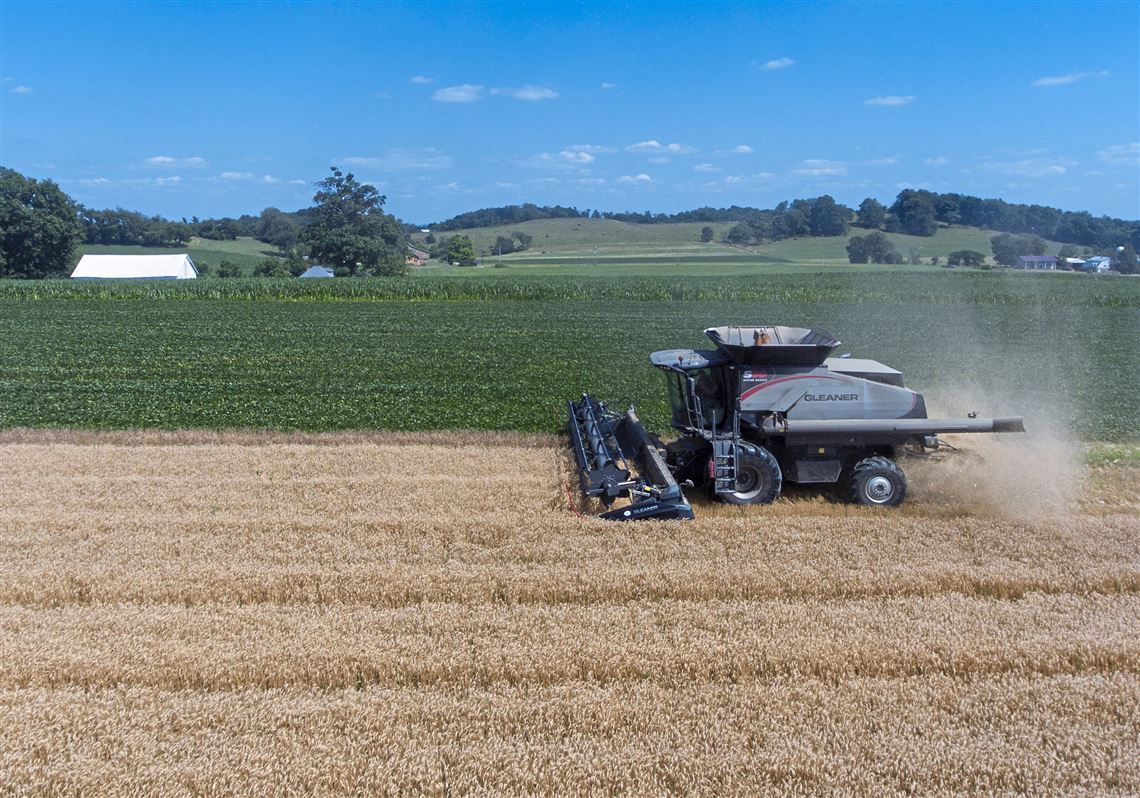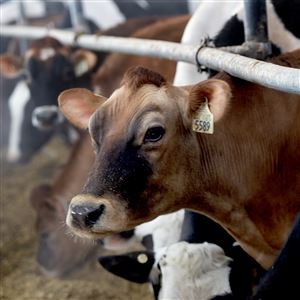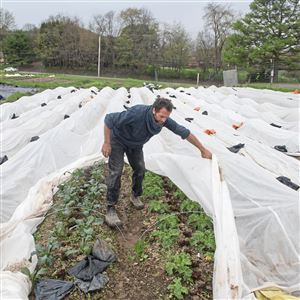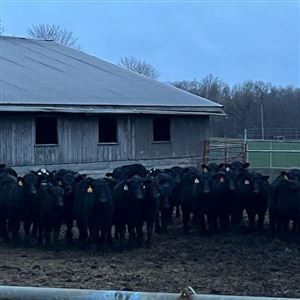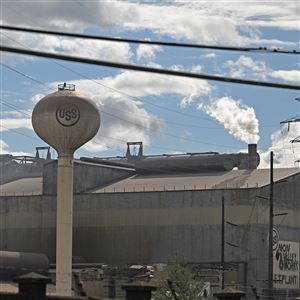Early in the pandemic, shortages of items like beef and chicken were widespread. Worker absences due to illnesses and space requirements caused many meatpacking plants to shut down, leaving grocery store meat aisles empty. And what meat was available was expensive.
Folks with access and money turned to local suppliers, like a nearby farm, said Tara Felix, a beef extension specialist with Penn State Extension.
And that demand, in turn, prompted operations like Logan Family Farms in Irwin to expand operations. Before COVID, the family raised 150 or so head of cattle in one year. Now, they grow close to 300.
“We had a huge increase in people calling, wanting to fill their freezer up with meat,” said Jenn Logan, who works on the farm along with her husband, Ben and his parents, Tom and Joann Logan. “We had cars lined up to the bridge out there waiting to buy meat, and there were many weekends where we were left with liver and bones.”
The business of farming is one of adapting to market conditions, weather forecasts and global upheaval. From the war in Ukraine to trade regulations governing trade with China to droughts across the Midwest, it all contributes to the moves that farmers like the Logan family make in trying to make a living.
Last year, high corn commodity prices meant Ben Logan saw a $200 marginal profit on each acre of corn — the kind used as feed for livestock.
That was a good number but it might not last.
“The cost to grow corn, soybeans, hay, went up 20%-30% this year because every input went up in price,” said Andrew Frankenfield, a Penn State Extension educator with expertise in farm business management. Input is the industry term for resources used in farm production.
According to the U.S. Department of Agriculture, fertilizer accounts for 36% of a farmer's operating costs for corn. The loss of access to suppliers due to pandemic-related supply chain disruptions and the war in Ukraine brought fertilizer prices to record levels.
“Fuel and lack of access to fuel because of the war in Ukraine is affecting the price of corn,” explained Ms. Felix.
Mr. Frankenfield said, “Diesel fuel on the farm to run equipment has nearly doubled or more.”
With the prices of fertilizer, equipment, and fuel up and the price of corn sliding, Mr. Logan expects next year’s crop to only reap $100 per acre.
Such volatility, whether due to global events or the weather, is part of being a farmer. Mr. Logan noted, “In a five-year period, we might have one really good year, one really bad year, and the other three we just manage to stay in business and pay our bills.”
Lately, Logan Family Farms has been able to manage these challenges by turning to the meat side of the business, using the direct-to-consumer business model to help retain many of the customers who discovered the farm because of the pandemic.
Pennsylvania is among the states uniquely situated for local direct-to-consumer sales. Like New England, “We have a unique market space because our consumer is so close to the farm,” Ms. Felix said. “Out west, where the majority of cattle and pigs are, we don’t see suburbia butted right up against farms.”
Overall, demand for meat has been on the rise as more people around the globe have been able to afford it. The United States is the largest meat consumer in the world and one of its largest meat producers. Japan and South Korea are major importers.
After the U.S. signed the Phase One Agreement with China to remove longstanding non-tariff barriers to trade, U.S. beef exports to China increased 13-fold between January and May 2021, according to the U.S. Department of Agriculture.
Logan Family Farms began their direct-to-consumer meat business in 2009 when Ben Logan decided to leave the National Resource Conservation Service and join the family business. His mother Joann Logan recounted expanding their meat business when he came aboard.
“The only way we could think of bringing more income to the farm was to do direct marketing,” she said. That became her responsibility while her husband and son tended to their then 60 cattle and handful of hogs. She joked, “It’s what you do for your kids.”
Going to farmers’ markets and relying on word of mouth marketing helped promote their products. “That’s how I was our advertising mojo,” Joann Logan said.
Logan Family Farms sells beef and pork cuts at seven farmers markets the region. They also take online orders out for delivery.
Frank Coda, an ex-paratrooper from Upper Saint Clair, bought a T-bone pork chop for $10 at their stand in the Bethel Park Farmers Market this past Tuesday. He buys from Logan Family Farms because they “left the fat on it.”
Lured in by their steakburgers, Anne-Marie Wiegmann, a 57-year-old accountant from Peters Township, said she’s going to order more online as she walked away with their pork and beef cut take-away menus. “I’m willing to pay a little more for something fresher.”
Ms. Wiegmann said she’s “just trying to support local business.”
Patti Iampietro, who is 54 and self-employed, has been a Logan Family Farms customer for at least 5 years, but she increased her orders with them during the pandemic because it cut down her time in the grocery store.
While selling cuts locally may make for a more neighborly experience, a mom-and-pop operation has to take on greater costs for delivering directly to the consumer.
The Logans have to raise 275 cattle and 150 hogs every year. They supply much of their own feed through the crop side of their business.
On their 1,300-acre farm, they grow soybeans which they sell to Fabin Brothers Farms in Indiana, Pa., to be crushed into high-protein soybean meal. They buy back some of this to mix with the field corn they grow and grind into feed.
The Logans then pay a processor $1.50 per pound to cut and package each 850-pound carcass.
As a small family farm when compared with commercial cattle farms out west, the Logans pay more for the butcher to hire an entity to take the hide, bones, and guts of a steer off their hands–parts of the cow that a large processing plant would be able to sell as leather, bone meal, and vats of fat for further production with no cost to the farmer.
Farmers like the Logans have been able to weather instability in the crop market because consumers are willing to buy local meat at a premium. But with a potential recession looming, it is uncertain whether that trend will continue.
Ms. Felix maintains a cautious outlook. With the trend of buying local in Pennsylvania, “We’re riding this wave right now, but we have no idea what’s going to happen with this war in Ukraine, or the drought out west, because that’s going to affect our meat marketplace in Pennsylvania whether we like it or not.”
“We have to think more globally, even though we want to buy more locally,” she said.
Ethan Dodd: edodd@post-gazette.com
First Published: July 16, 2022, 10:00 a.m.








